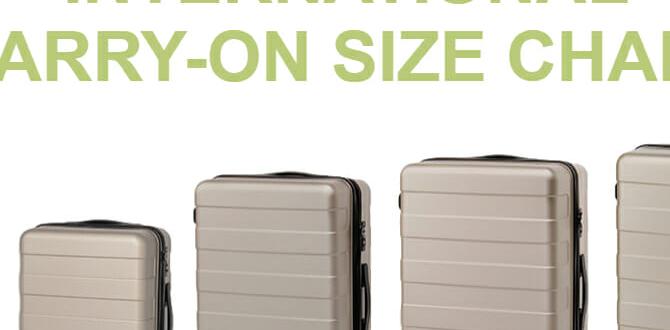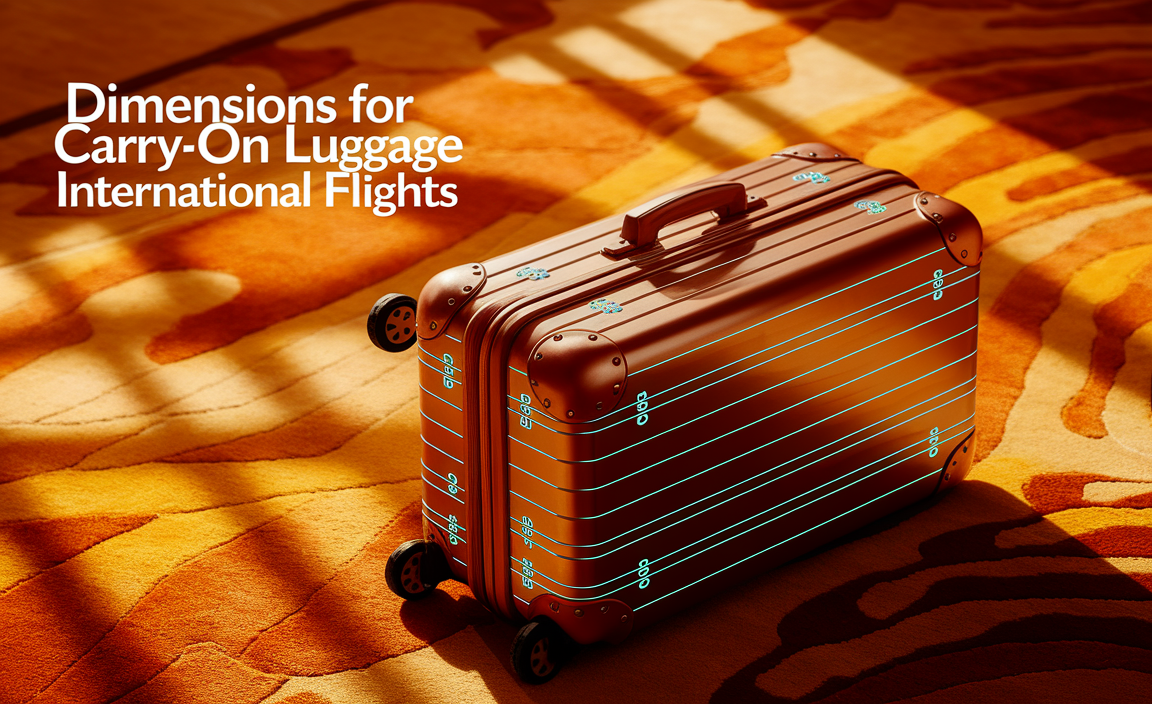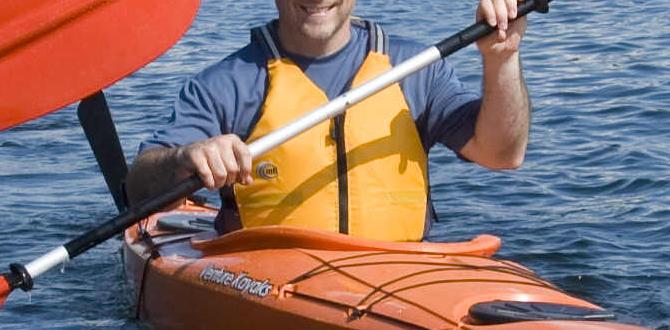For a crowd-free Australian adventure, aim for the shoulder seasons: Spring (September to November) and Autumn (March to May). These periods offer pleasant weather and fewer tourists, making your trip more relaxed and enjoyable across most of Australia.
Dreaming of kangaroos hopping across vast landscapes, the vibrant colours of the Great Barrier Reef, or the charming streets of Sydney without the bustling crowds? Planning your perfect Australian getaway can feel a bit overwhelming, especially when you want to experience its many wonders without feeling like you’re in a constant queue. Many travelers worry about hitting peak season and dealing with packed attractions. But don’t let that discourage you! Journey Essentials is here to help you find that sweet spot. We’ll navigate you through the best times to visit Australia for a more peaceful, authentic experience, ensuring your trip is comfortable and memorable from start to finish.
Understanding Australia’s Unique Seasons
Australia is a massive continent with incredibly diverse climates. Because it’s in the Southern Hemisphere, its seasons are opposite to those in Europe and North America. This means that when summer is winding down up north, it’s just beginning down under, and vice-versa. This vastness also means that what’s perfect beach weather in Queensland might be too cool for a dip in Tasmania, and vice versa. Understanding these regional differences is key to finding your ideal crowd-free time.
For instance, the tropical north (think Cairns and Darwin) has a distinct wet and dry season. The dry season, from May to October, is generally considered the most pleasant for visitors, with less humidity and rain. Conversely, the southern parts of Australia (like Sydney, Melbourne, Adelaide, and Perth) experience more traditional four-season weather, with hot summers, mild winters, and pleasant spring and autumn periods. Knowing this helps us pinpoint when and where to go to avoid both the peak tourist numbers and unreliable weather.
The Shoulder Seasons: Your Crowd-Free Sweet Spot
The absolute best strategy for avoiding crowds in Australia is to travel during the “shoulder seasons.” These are the periods just before and just after the most popular times. They often offer a fantastic balance of good weather, lower prices, and, crucially for us, fewer people.
Spring in Australia (September – November)
Spring is a beautiful time to visit many parts of Australia. The weather is generally warming up, flowers are blooming, and the country shakes off the winter chill. It’s an excellent time to explore the southern states without the intense heat of summer, and it’s still within the dry season for the tropical north.
Why Spring is Great for Crowd-Free Travel:
- Pleasant Temperatures: Across most of the country, temperatures are mild and comfortable, perfect for sightseeing and outdoor activities.
- Natural Beauty: Wildflowers bloom in Western Australia, and the landscapes are lush and vibrant after the winter rains.
- Fewer Families: The school holidays are typically in July and again over Christmas, meaning spring often sees fewer families traveling, especially outside of major public holidays.
- Early Summer Vibes: Southern cities start to enjoy warmer days, making coastal walks and outdoor dining enjoyable without the summer crowds.
Where Spring Shines (and is less crowded):
- Melbourne & Victoria: Enjoy stylish cafes, explore the Great Ocean Road, and visit wine regions like the Yarra Valley. Temperatures are mild, and the city feels more relaxed.
- Adelaide & South Australia: Discover the Barossa Valley and McLaren Vale wine regions, or explore Kangaroo Island’s wildlife. Spring offers comfortable exploration weather.
- Perth & Western Australia: Experience the bloom of wildflowers, especially in September and October. The weather is fantastic for exploring the coast and the city.
- Sydney & New South Wales: Enjoy the harbour city with pleasant temperatures, ideal for exploring The Rocks, Bondi Beach, and the Blue Mountains.
- Tasmania: Spring brings milder weather, making it a great time to explore its rugged landscapes, historic towns, and gourmet food scene.
Autumn in Australia (March – May)
Autumn is often considered the golden season in Australia. The intense heat of summer begins to recede, replaced by clear skies and crisp air. This is another prime time for avoiding large tourist groups and enjoying a more serene travel experience.
Why Autumn is Ideal for Avoiding Crowds:
- Comfortable Weather: The oppressive summer heat dissipates, leaving behind pleasant, cool-to-mild temperatures ideal for extensive exploration.
- Stunning Scenery: The foliage in some regions turns beautiful shades of gold and red, offering picturesque landscapes.
- Post-Holiday Lull: Major school holidays are over, and the Christmas rush is still months away, leading to a noticeable drop in visitor numbers.
- Ideal for Nature: Perfect for hiking, wildlife spotting, and enjoying Australia’s natural beauty without overheating.
Where Autumn Excells (and is less crowded):
- Sydney & New South Wales: Experience pleasant temperatures for exploring the city, coastal walks, and the stunning autumn colours in areas like the Blue Mountains.
- Melbourne & Victoria: Autumn foliage in Melbourne’s parks is spectacular. It’s a perfect time for exploring the city’s laneways and visiting nearby attractions like Phillip Island.
- Adelaide & South Australia: Enjoy harvest season in the wine regions and explore the Flinders Ranges with comfortable temperatures.
- Tasmania: Autumn colours are vibrant, especially in the interior. It’s a fantastic time for hiking and exploring its natural parks.
- Cairns & Tropical North Queensland: While still warm, March can see the tail-end of the wet season. However, by April and May, the weather transitions beautifully into the dry season, with fewer crowds than the peak June-August period. It’s a great time for the Great Barrier Reef.
When to Potentially Avoid if You Seek Fewer Crowds
While Australia is a year-round destination, certain periods naturally attract more visitors. Knowing these can help you plan your escape to the quieter times.
Peak Summer (December – February)
This is Australia’s holiday season. School is out, and many Australians take their annual leave. This means:
- High Season Prices: Flights and accommodation will be at their most expensive.
- Crowded Attractions: Iconic sights, beaches, and national parks will be busy.
- Extreme Heat: Large parts of Australia, especially the south, experience very hot weather, which can be uncomfortable for extensive sightseeing. The tropical north is in its humid wet season.
Exception: While busy, the far north (like Darwin and Kakadu) is in its wet season, which deters some typical tourists, making it less crowded than the south, though travel can be affected by monsoonal rains.
Major School Holidays (e.g., July & September/October, December/January)
Even outside of peak summer, coinciding with Australian school holidays will generally mean more domestic travelers and higher prices. These periods include:
- Late June to July: Winter holidays, especially popular for families heading north to escape the cold.
- Late September to early October: Spring school holidays often see an increase in family travel.
- Mid-December to late January: The Christmas and New Year period and summer school holidays are the busiest times of the year across the entire country.
Pro Tip: If you absolutely must travel during school holidays, consider focusing on less conventional destinations or booking accommodation and activities very far in advance.
Regional Guides to Crowd-Free Australia
Let’s break down some popular regions and their best crowd-free times:
The Great Barrier Reef (Queensland)
The prime time for this natural wonder is the dry season. However, to avoid the biggest crowds, aim for the shoulder months within this period.
- Best Crowd-Free Time: May to June and September to October.
- Why: These months fall within the dry season (May-October), offering excellent visibility and calm waters. You’ll miss the main July school holidays and the peak of autumn bird migration that can sometimes impact water clarity. The water is also warmer in September/October than in May/June.
- Also Consider: March/April is the tail-end of the wet season and less busy, but visibility can be unpredictable. Check current conditions. The Australian government recommends visiting outside of stinger season (typically November to May in the northern parts of the reef), though precautions are taken year-round. For more information on reef conditions and conservation, consult Great Barrier Reef Marine Park Authority.
Sydney & Melbourne
These bustling cities are popular year-round, but you can find quieter times.
- Best Crowd-Free Time: March to May (Autumn) and September to November (Spring).
- Why: These shoulder seasons offer mild weather perfect for exploring urban attractions, coastal paths, and nearby regions like the Blue Mountains or the Great Ocean Road. You’ll bypass the summer crowds and the extreme heat, and also the winter chill.
- Avoid: December holidays, Australia Day (late January), Easter holidays, and July school holidays will be busier.
Uluru-Kata Tjuta National Park (Northern Territory)
The Red Centre is best explored when temperatures are manageable.
- Best Crowd-Free Time: April to May and September to October.
- Why: These months offer pleasant daytime temperatures (around 20-30°C) perfect for walking and exploring, avoiding the extreme heat of summer (often above 40°C) and the cooler winter nights. You’ll also miss the busiest July school holidays.
- Also Consider: The drier, cooler winter months (June-August) are popular but can be very busy. If shoulder seasons are too cool for your preference, these can still be good options if you book well in advance. The park is managed by the Australian Government and offers insights into desert survival and culture.
Tasmania
This island state is a haven for nature lovers and foodies.
- Best Crowd-Free Time: March to May (Autumn) and October to November (late Spring).
- Why: Autumn brings stunning colours and mild weather ideal for hiking. Late spring offers longer daylight hours and blooming flora without the summer peak. You’ll escape the winter cold and the busier summer months.
- Avoid: Peak summer (December-February) and major school holidays.
Western Australia
From Perth to the Margaret River and the stunning Kimberley region, WA offers diverse experiences.
- Best Crowd-Free Time:
- Perth & South West (Perth, Margaret River): September to November (Spring) and March to May (Autumn).
- Kununurra & The Kimberley: May to October (Dry Season).
- Why: Spring in the southwest is famous for its wildflowers. Autumn offers pleasant temperatures for wine tasting and coastal exploring. The Kimberley’s dry season makes travel accessible and enjoyable, avoiding the torrential rains of the wet season. Aiming for early May or late October in The Kimberley can mean fewer crowds than during the peak July-September months. The WA Parks and Wildlife Service has essential info for exploring national parks.
Travel Tips for a Crowd-Free Experience
Even when traveling in the shoulder seasons, some practical tips can enhance your crowd-free experience significantly.
Book in Advance
While you’re aiming for less busy times, popular accommodations or specific tours can still fill up, especially if they coincide with any local festivals or long weekends. Booking your flights and key lodgings a few months ahead is always a good idea.
Be Flexible with Destinations
If your heart is set on a particular iconic spot that might still have some crowds, consider exploring lesser-known neighbouring areas. Often, just a short drive away, you can find equally stunning scenery with a fraction of the visitors.
Travel Mid-Week
If your schedule allows, travelling on Tuesdays, Wednesdays, and Thursdays can often mean fewer crowds at airports, attractions, and even on tours, as most leisure travel happens over weekends.
Consider Less Popular Cities or Regions
While Sydney and Cairns are fantastic, Australia has countless other gems. Think about visiting Brisbane, the Gold Coast (outside of peak school holidays), Canberra for a dose of culture, or exploring regions like the Murray River or the Atherton Tablelands.
Use Technology to Your Advantage
Timing apps and crowd-monitoring websites can sometimes give you real-time insights into how busy certain attractions are. While not always perfect, they can help you adjust your plans on the fly.
Packing for Comfort: Essential Travel Buddies
No matter when you visit or where you are, comfort is key to enjoying your travels, especially if you have specific needs. As a traveler myself, I know that feeling prepared means peace of mind. For instance, having confidence in personal care items can make long flights or busy days exploring much more relaxed.
For those who might need them, high-quality adult diapers offer discretion and reliability, allowing you to focus on the experience, not worry about leaks. Similarly, for parents, having good child diapers means stress-free excursions, whether you’re on a bus tour or a long hike. Brands like Depend or TENA for adults, and Pampers or Huggies for children, often provide reliable absorbency and comfortable fits, perfect for active travel.
Don’t forget essentials like:
- A comfortable, supportive travel pillow for flights and long drives.
- Reusable water bottles to stay hydrated and reduce waste.
- Sun protection: sunscreen, hats, and sunglasses are non-negotiable in Australia.
- Lightweight, breathable clothing suitable for warmer days and layers for cooler evenings.
- A reliable daypack for carrying essentials.
Frequently Asked Questions (FAQ)
Q1: Is it possible to visit Australia without encountering any tourists at all?
It’s highly unlikely to visit any country, especially one as popular as Australia, and encounter absolutely no tourists. However, by visiting during the shoulder seasons (spring and autumn) and exploring less-hyped destinations, you can significantly minimize your exposure to large crowds and have a much more serene experience.
Q2: When is the cheapest time to visit Australia?
Generally, the cheapest time to visit Australia is during the off-peak seasons, which often overlap with the shoulder seasons but can also include periods outside of major holidays and school breaks, even within the generally less popular winter months for some southern regions. You’ll find lower prices for flights and accommodation typically from February (after summer holidays) through to May, and again from September through to November, avoiding major public holidays and school breaks.
Q3: Will I need a visa to visit Australia?
Most visitors to Australia will need a visa or an Electronic Travel Authority (ETA). The type of visa depends on your nationality and the purpose of your visit. For example, citizens of many countries can apply for an ETA online for tourist or business purposes. It’s essential to check the requirements well in advance of your trip on the official Department of Home Affairs website.
Q4: What is the weather like on the Great Barrier Reef during the shoulder seasons?
During the shoulder seasons for the Great Barrier Reef (May-June and September-October), the weather is typically sunny, warm, and pleasant. These months fall within the dry season, meaning lower humidity and minimal rainfall. The sea temperature is comfortable for swimming and snorkelling, and water visibility is generally excellent, making it ideal for reef exploration.
Q5: Is it safe to travel in Australia during the shoulder seasons?
Yes, Australia is a very safe country to travel in. The shoulder seasons are particularly enjoyable as they offer comfortable weather for outdoor activities and reduce the chances of extreme heat or weather disruptions. As with any travel, it’s always wise to be aware of your surroundings, secure your valuables, and follow local advice, but there are no specific safety concerns unique to the shoulder seasons.
Q6: I’m travelling with a young child. Are the shoulder seasons the best time for us?
Absolutely! The shoulder seasons (spring and autumn) are excellent for families. The weather is generally milder, making it more comfortable for children to explore without overheating. Many attractions are less crowded, which can make the experience more enjoyable and less stressful for both parents and kids. Plus, having easy-to-access and reliable child diapers means your adventures can go uninterrupted.
Conclusion: Your Perfect, Peaceful Australian Escape Awaits
Australia is a land of breathtaking diversity, from ancient rainforests to vibrant coral reefs and sun-drenched beaches. By understanding its unique climate and seasons, you can easily unlock the secret to a more peaceful and crowd-free experience. Targeting the **spring (September to





